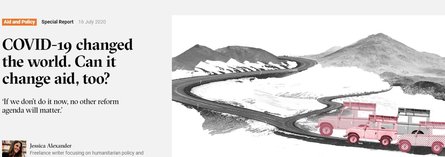
n late March, I was teaching a course on humanitarian affairs, meeting via Zoom with graduate students at Columbia University in New York. Coronavirus had already overwhelmed Italy, and neighbouring Switzerland, where I live, had just gone into lockdown.
We were discussing how the virus might impact places like Cox’s Bazar, Bangladesh, where as many as one million Rohingya refugees live across 34 ramshackle camps, in flimsy shacks that cling to the sides of deep ravines and valleys. We talked about how rudimentary health services wouldn’t be able to provide intensive care; how overcrowding would make the concept of social distancing preposterous; how the peak of the disease might coincide with the summer cyclone season, making it impossible for humanitarian workers to respond to both crises at once.